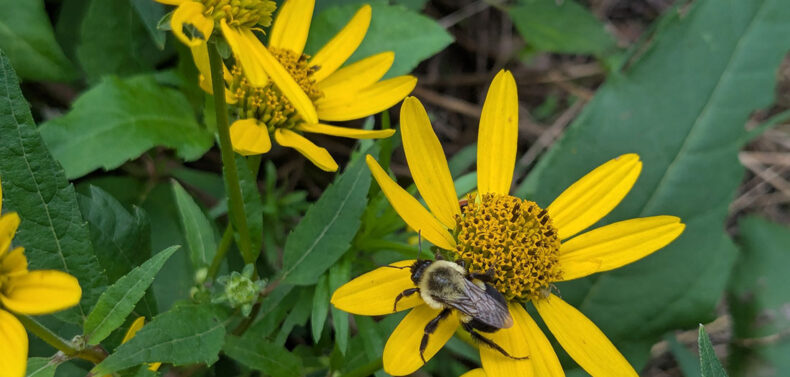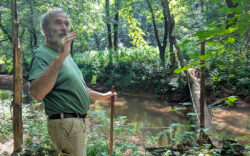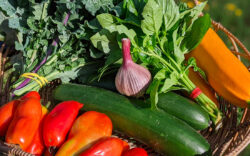If you’re worried about backyard pollinators, join the Great Southeast Pollinator Census this Friday and Saturday, Aug. 22–23, to learn more about these critters and record their numbers.
Becky Griffin, the University of Georgia Extension’s school and community gardens director, started the Pollinator Census in Georgia in 2017. Griffin wanted a way to educate people about pollinators, provide guidance on preferred pollinator habitats and record data about insect populations. The pollinator census—this year adding its fifth state of Alabama—helps to accomplish all these goals.
First, you’ll need to identify where you plan on counting insects. If you’ve got a huge patch of wildflowers or a bushy plant that’s awash in bugs, make a reasonable choice in how to approach the count, Griffin said. If you have a patch of zinnias, perhaps focus on only two or three blooms. If you have a large mound of mountain mint, maybe limit yourself to a 2-foot by 2-foot area. “Make it a little bit more manageable for yourself,” she said.
If you don’t have a yard or any flowers blooming in August, you can still complete the census in other locations. The Georgia State Botanical Garden will have information available for visitors who would like to participate during the count. Groups across the state will participate, including Slow Pour Brewing in Gwinnett County (the brewery has a pollinator garden on site), the Conyers-based Monastery of the Holy Spirit and the Georgia chapter of Daughters of the American Revolution, Griffin said. Anywhere you can comfortably sit or stand for 15 minutes and observe a pollinator plant could be a good fit. I’ve already picked out a large patch of cup flowers (silphium perfoliatum) popular with pollinators for my census count.
After picking a spot, you’ll need to learn a little about the pollinators you might see so you can count them correctly. “You don’t have to have a PhD in entomology or be an insect guru,” Griffin said. You will need some basic bug-identifying skills. You’ll be looking to tell the difference between carpenter bees, bumblebees, honey bees, small bees, flies, wasps, butterflies/moths and other insects. Information on how to tell the difference can be found at the website gsepc.org.
“It’s almost like a treasure hunt when you’re out there hunting around,” Griffin said.
I attended a webinar Griffin hosted on the census count. She quizzed attendees on what the insect on the screen was. I practiced in my garden later and loved stretching my new skills. Mostly, I saw bumblebees, but I did catch a glimpse of a bee mimic—a fly colored like a bee to deter predators. I also noticed the larvae of a green lacewing, a bug I would not have seen without Griffin’s lecture.
Once you’ve got your spot picked out and some ID knowledge, choosing a 15-minute time window in that 48 hours is all that’s left. “Between 10 a.m. to 1 p.m. is my favorite time to count,” Griffin said. Weather will be a factor because most insects don’t fly in the rain or during the hottest part of the day. Some people exclusively count at night, and that’s fine, too, she said.
You’ll want to count the number of times an insect lands on your specific plot, not the number of insects. Statisticians said it would be easiest for Southeast participants and simpler than trying to individually mark the possible hordes of pollinators visiting a favorite spot, according to Griffin.
The census’ website has a form for counters to fill out with their observations. This citizen-scientist project is important beyond general education—researchers use the collected information, Griffin said.
Such citizen-collected data has helped experts quantify how much all pollinators add to agricultural crops. For example, often-maligned flies are the No. 2 pollinator of agricultural crops and an important part of the ecosystem. Pollinators mean the insects move pollen from one plant to another, not necessarily that they collect pollen, Griffin said.
Learning a little more about the natural world right outside our homes can lead to more people building native habitats and less fear of the beautiful, productive insects in our yards. “You’re going to fall in love with the diversity your garden attracts when you start counting insects,” Griffin said.
Like what you just read? Support Flagpole by making a donation today. Every dollar you give helps fund our ongoing mission to provide Athens with quality, independent journalism.









